
All categories
Featured selections
Trade Assurance
Buyer Central
Help Center
Get the app
Become a supplier

(39186 products available)




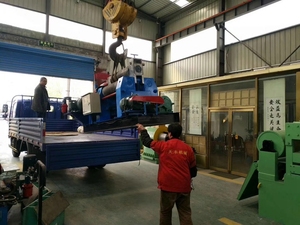


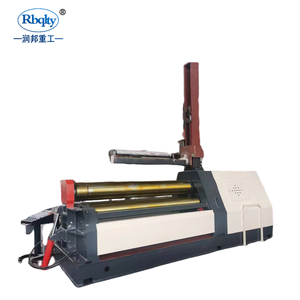








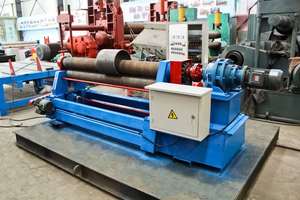





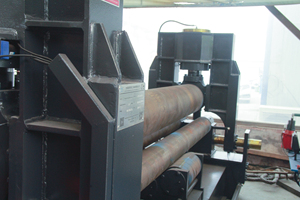


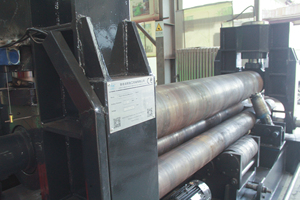
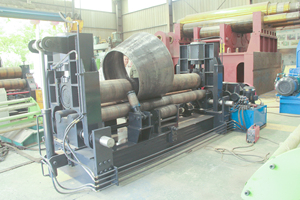

Manual roller machines are available in different types. Each type is designed to work with specific materials and applications.
Manual Roller Bending Machines
These machines have three cylinders that form pipes into curves. The bottom roller is adjustable and rotates to move the workpiece. The two top rollers exert pressure to bend the material. The manual pipe roller bending machine works with metal sheets of varying sizes. It's ideal for creating large or heavy-duty cylindrical objects.
Universal Roller Machines
This machine can produce various shapes. It has three main rollers. One roller is positioned horizontally, while the other two are tilted at different angles. The angled rollers create different shapes, such as conical and elliptical forms.
Hand Crank Roller Machines
This machine has a small roller that bends metal sheets efficiently when it's cranked by hand. It doesn't require an electric motor or other power sources. It can be used for small projects in workshops or at home.
Pinch Roller Bending Machines
This machine inspires the bending process. It has rotating lower rollers that "pinch" the metal parts. The upper part of the machine applies force to reshape the metal sheets or plates into arcs or cylinders. The machines require several manual operations to align the workpieces for accurate bending and pinching.
The overall size of the metal rolling machine varies with different models. Usually, the length is around 1400-1900mm, the width is 950-1300mm, and the height is 1700-2300mm. The precise size needs to be confirmed with the supplier.
Simply speaking, the bigger the machine, the thicker and larger metal sheets it can roll. However, the machine will be more challenging to move and may have higher electricity costs.
The weight of the machine varies with the material. The cast iron machine weighs around 946kg, while steel is 4100kg. If the weight is too heavy, it may need to be transported in a freight container.
Overall, there are three main components to the manual metal roller machine:
The rolls can be made from solid steel plates, cast iron, or steel with a rubber coating to prevent slipping. The side frames of the roller machine, which support the three main rolls, are made of cast iron or heavy steel plates. The strong supporting frames help to change the position and angle of the three rolls accommodating various types and thicknesses of metal sheets.
Usually, the manual metal roller machine will have a foot pedal or a hand crank, which is used to turn the spindle and rotate the rolls. A hand cranked roller machine is usually less expensive, while a foot pedal can allow better control and safety.
Overall, maintenance for any machine involves cleaning it, lubricating all movable parts, and applying rustproof paint to the machine's body. Any loose parts or damaged ones should be repaired or replaced carefully to ensure all safety standards are met.
The application of manual roller machines is diverse and widespread. It is not limited to the production of cylindrical and arc-shaped workpieces. It's a bending machine that can be used to assists various industries to achieve different bending purposes.
Machine building industry:
Manual plate rollers are often used to manufacture the housings, frames, and other parts of machinery, which are mostly made of metal plates. The precision and flexibility of manual roller machines make them suitable for shaping and forming complex structures that meet the requirements of machine equipment. Furthermore, the quality of machine parts directly affects the operation of the entire mechanical equipment.
Construction and metal structure:
In the construction industry, manual roller machines can be used in conjunction with other machines to build lightweight metal frame structures. They can also roll metal sheets into arcs and circles to make domes and other architectural components. Manual rollers are also commonly used machines for making metal decorative parts in the construction industry.
Aerospace and automotive industries:
The aerospace and automotive sectors pursue lightweight and high-performance materials and components. Therefore, both industries rely heavily on machines like CNC milling machines to ensure the structural strength, safety, and durability of aerospace vehicles and automotive parts. One example is that manual roller machines can be ideal for creating the skin and structural components of aircraft in the aerospace industry. In the automotive industry, they can be used to make lightweight and high-strength parts like automotive chassis and body panels.
Marine and shipbuilding industries:
Manual roller machines can be used to make the hull, deck, and other components of marine vessels. The precision of the manual rollers and their ability to handle thick plates makes them suitable for the construction and repair of ships.
Transportation industry:
Transportation includes not only rail transportation but also automotive and maritime transportation. All these mediums need to rely on various kinds of vehicles to serve. Manual roller machines can be used to roll and shape vehicle frames, body panels, and structural components. This includes parts for automobiles, motorcycles, trucks, and buses, as well as structural components for tractors and other farm equipment.
Energy industry:
Solar energy is the most abundant and widespread source of energy in the world, and solar energy has enormous potential. Solar panels are an essential component of solar energy conversion, and they need to be rolled to form a precise arc. Manual roller machines can easily meet this need. Besides, manual rollers can also be used for bending pipes in power generation or electrical equipment, such as turbine casings.
Arts and entertainment industry:
Manual roller machines are the unsung heroes behind the scenes, shaping and bending metal into the intricate frames and structures that support stages, concert halls, and theatrical productions. Whether rolling smooth arcs, precise curves, or elegant swirls, manual rollers ensure that every backdrop, prop, and stand is sturdy, lightweight, and comfortable to transport, contributing silently but significantly to the vibrant world of live performance.
Capacity:
Find out the maximum capacity, which is measured in terms of thickness and width. Depending on the specific needs of the project, verify whether the roller machine can handle the required plate thickness and width.
Adjustability:
Look for machines with features like movable side rollers, lower roller elevation, and top roller alignment that enable the adjustments necessary to achieve different shapes and curves.
Rolling Precision:
Evaluate the accuracy of the machine's rolling process. Smoothness and precision are essential for creating components that fit together properly, so opt for machines that offer precise rolling capabilities.
Control Mechanism:
Choose a machine with a control mechanism that suits operational needs. Whether it's manual controls, analog/digital displays, or CNC controls, select an appropriate control system to ensure efficient and accurate handling.
Construction and Build:
Ensure the selected machine's construction and build quality are tough and durable, which can resist high-stress levels and lead to longevity with minimal maintenance needs.
Safety Features:
Prioritize safety by considering optional safety features, such as emergency stop buttons, safety guards, or protective enclosures. These features help ensure safe operation and reduce accident risks.
Power Source:
Consider the machine's power source, whether it's manual, electric, or hydraulic. Choose a suitable power type according to preference and application requirement.
Optional Accessories:
Explore optional accessories, such as specific rolling attachments or additional tools, which enhance the machine's versatility and expand its range of applications.
Maintenance Requirements:
Select machines with manageable maintenance requirements. Opt for those with easily accessible components and avoid complex maintenance to reduce downtime and keep productivity high.
Budget:
Finally, consider the budget constraints and compare the features and specifications within the price range. Choose a machine that delivers the right balance between performance and cost-effectiveness to meet the project's specific requirements.
Q1: What are the limitations of manual sheet rolling machines?
A1: The main limitations of the manual machines are reduced capacity and automation. They can roll only limited sheet sizes. All processes require manual setting and adjustments without automated controls or presets.
Q2: Which industries use manual sheet metal rollers?
A2: Metal fabrication shops, heating and air-conditioning ductwork manufacturers, sign makers, plumbing companies, musical instrument manufacturers, and aluminum pool builders are just some examples of businesses that use this roller machine.
Q3: What are the different types of manual metal rollers?
A3: The most common type is the universal roller, but there are also other kinds, such as the three-roll converging roller, the hand crank rolling pliers, and the active-passive roller.
Q4: How is safety maintained when operating a manual roller?
A4: Always follow the manufacturer's instructions to ensure safe operation. Avoid placing hands or body parts near the rolls during operation. Maintain the roller machine in good condition. Ensure all components are intact, and there are no loose parts. Do not use damaged material.